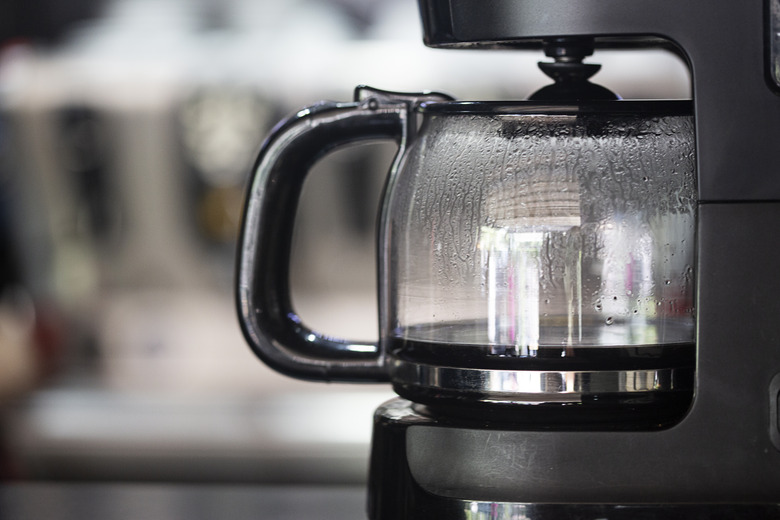How To Clean A Coffee Maker With Bleach
Cleaning a coffee maker with bleach isn't a good idea. Bleach is a harsh chemical and unsafe for consumption. Even highly diluted bleach and water solutions used to sanitize dishes in commercial settings need to air dry for complete effectiveness, and this can't happen inside a coffee maker. Instead, you run the risk of bleach being retained in the brewing mechanisms, causing damage to the machine, and ending up in your morning cup.
With cheap, effective and much safer options readily available, skip cleaning your coffee maker with bleach.
Oops! Already Used Bleach
If you got a little too excited about cleaning your coffee maker and already ran diluted bleach through it, do you need to throw out the appliance? It depends on how much bleach you put in. If the dilution was at least 2 teaspoons of bleach in 1 gallon of water, you can flush the system by running a full pot of water through the brewing cycle at least four separate times and then leaving the top open to allow the machine to air dry as much as possible.
If the bleach dilution was stronger than 2 teaspoons of bleach to 1 gallon of water, you may not be able to adequately flush out the bleach that will linger in the coffee pot. Don't try to clean out the bleach by flushing the coffee maker with vinegar, as this will result in toxic gas.
Finally, you can purchase bleach solution food handling test strips for cheaper than you can purchase a new coffee maker. Run water through the coffee maker again and test the resulting "brew" with the strip to look for zero indication of bleach. To be on the safe side, buy a new coffee maker.
Safe Ways to Clean Your Coffee Maker
A vinegar solution is a much safer way to clean your coffee maker, and it's just as cheap and convenient. Unlike with bleach, if you end up not flushing all the vinegar out of the coffee maker after cleaning, the only side effect will be a bad taste, not poison.
Mix equal parts white vinegar and water to completely fill the water reservoir, and run the solution through your coffee maker by using the longest cycle possible. Follow it up with a brewing cycle of plain water, and if a vinegar smell or taste lingers, run additional cycles.
You can also clean a coffee maker with apple cider vinegar if you don't have white vinegar on hand. Simply mix two times as much water as apple cider vinegar to make this cleaning method as affordable and efficient as possible.
Coffee Maker Cleaner vs. Vinegar
Commercial coffee maker cleaners are also available, and the only downside of coffee maker cleaners vs. vinegar is that they're more expensive. They work just the same, requiring you to dilute the solution with enough water to fill the tank, run the cycle with no paper filter and then run a rinse cycle with pure water.
You can improve the efficacy of any cleaning solution you choose, either coffee maker cleaners or vinegar, by letting it soak in the water tank for about 30 minutes before beginning the cycle and letting it soak in the coffee pot for another 30 minutes after finishing. This ensures that the cleaning solution comes into contact with the buildup and scale long enough to really loosen it up. Very dirty coffee makers may need multiple cycles run with the cleaning solution.
Finally, don't allow coffee grounds to stay in your coffee maker after use in order to discourage mold and mildew growth. Open up the coffee maker as much as possible to allow it to air dry when not in use and clean your coffee maker with a cleaning solution at least weekly.
